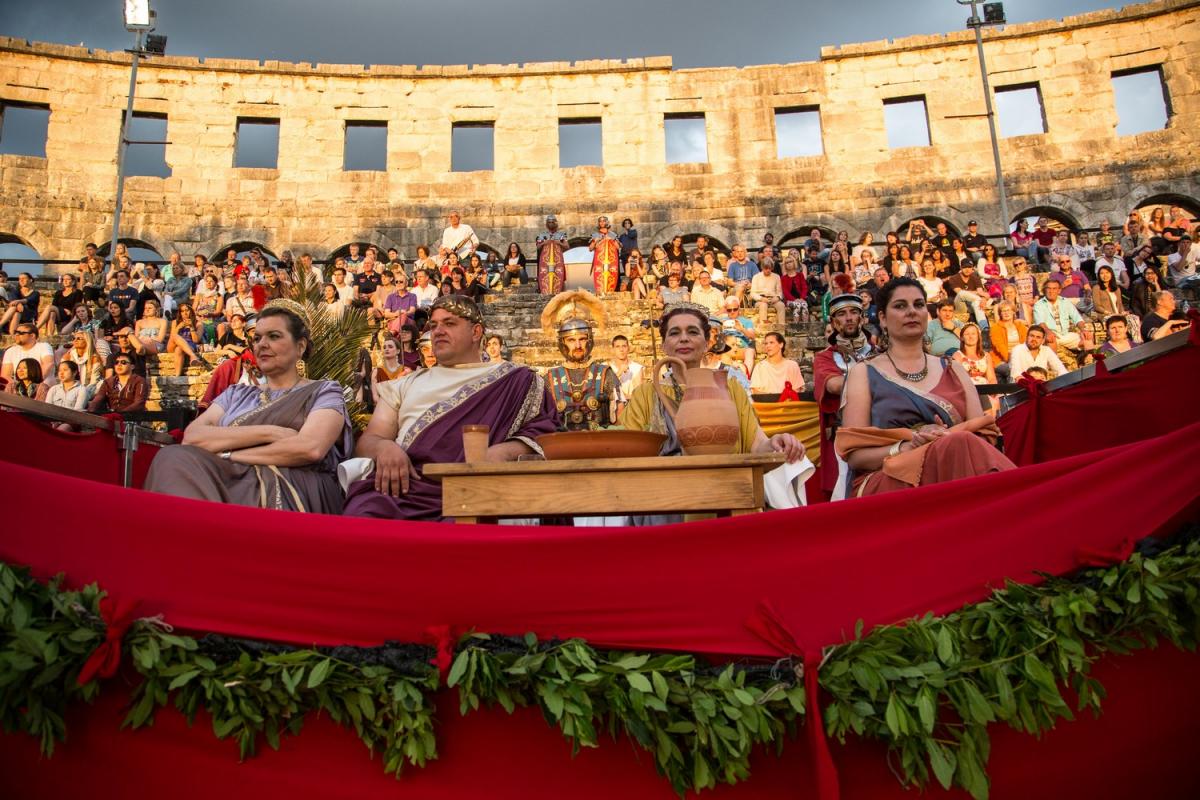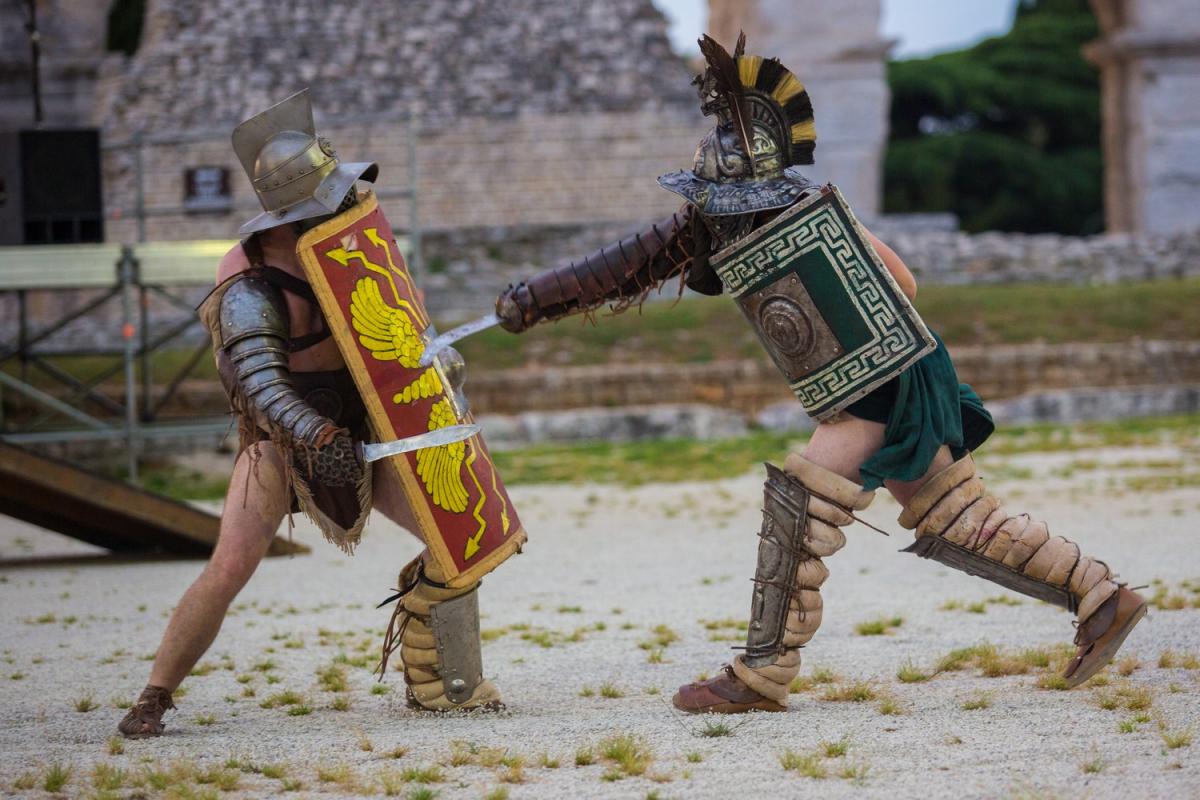Life and Death on the Burning Sands of the Arena
Discover the most impressive historical monument of Istria more than two thousand years old. Visit the Arena and experience for a moment the life of ancient Pula.
Come back two thousand years in the past with us. It is the year 10 B.C. The Pula amphitheater has existed for nearly twenty years now, and the crowd and patricians worship the battles until the last drop of blood.
 The life of patricians and gladiators
The life of patricians and gladiators
Before going to the arena, the patrician dines with his family on a gorgeous honey-coated roast. He waters down delicious bites with even sweeter wines - ruby-red Istrian Teran. Vinum pucinum, as Romans call it, encourages passion and longevity.
While the patrician enjoys, the gladiator is preparing for the most important day of his life. They captured him somewhere at the border of the Empire and brought him to this unknown town, far from Rome. He trained at the gladiator training school, and is now facing a battle for life or death.
Because of its size, the arena was built outside the walls of the town, so the patrician and his servants have to travel from his home on the Via Flavia, to the best places in the Arena.
The battle begins on the burning sands of the Arena. The noise from the forum is deafening. The loudest crowd is in the most remote seats, intended for the poorest people in Pula. They are full from the free bread that was shared before the fight. Bread and circuses!
Our gladiator throws the opponent on his knees. He puts his sword to his throat, and expects the response of the audience. Thumb up or down?
 Visit the unique Arena in Pula
Visit the unique Arena in Pula
It was indeed so easy to condemn someone to death in the time of antiquity, and the rulers knew that the bloodshed and free bread was buying them peace in the town and the empire. So it was decided that Pula would construct an imposing arena.
The construction of the Arena started during the reign of the Emperor Augustus in the early 1st century, while during the reign of the Flavian dynasty it was expanded to accept as many as 23,000 spectators.
Built from local limestone in Tuscan style, it consists of four levels with the highest point as high as 33 meters. The central part was used for gladiator fights, animal hunts and public trials.
Although the entrance was free, the seating arrangement strictly followed the social hierarchy of wealth and reputation because of which the poorest were seated on the level with the worst view of the arena.
Below the fighting ground of the Pula Arena was the spare underground room used for keeping beasts in their cages, while today it is the site of a permanent exhibition titled 'Olive and Wine Production of Istria during the Antique Period'.
If you visit Pula during the summer months, do not miss the open-air film projections or the concerts of world music stars.

Pula Superiorum - Days of Antiquity: Experience the life of ancient Romans!
Do you want to see a fierce gladiator fight and root for your favorite? Do you want to taste the delicacies enjoyed by the rich Roman patricians? Do you want to see the armor of a Roman soldier? Do you want to take a selfie with a Roman emperor?
Come to Pula in June and visit the event Pula Superiorum - Days of Antiquity, which revives the millennia-old antique history of Pula!
» Working hours and tickets












